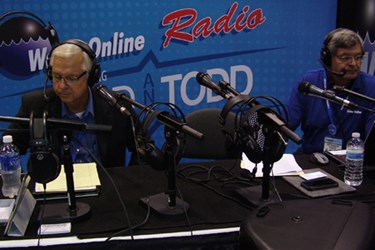Looking Towards The Future Of Wastewater

Jim Jackson, National Sales Manager for Mazzei Injector Company, discusses future trends for wastewater: direct potable reuse, ozone gas, ultra-filtration membranes, and one cutting-edge treatment plant that is now utilizing "designer" or custom-made recycled water with environmental benefits.
Water Online Radio: What does Mazzei Injector do within the water industry?
Jim: Mazzei Injector participates in the dissolution of chemicals or gasses into water and wastewater systems to improve the water quality. We augment the filtration, the flocculation or the disinfection of water, and also the activated sludge basins with oxygen.
Water Online Radio: What is the single biggest challenge with using wastewater as a potable water source?
Jim: Today, with advanced treatment, we are reaching the point of water quality with the advanced treatment of wastewater where we can reuse the water and eventually use it as a direct resource for drinking water. But it is not yet widely understood or accepted by the public. The fact is, if you live in Las Vegas, for example, and you are drinking a glass of water that comes from Lake Meade, it’s coming from a source that was originally wastewater. The Lake Meade area has participated in indirect reuse of wastewater for many years.
Water Online Radio: Has there been a regulatory push to expand the reuse of wastewater?
Jim: There currently is a movement starting in California. California Senate bill SB918 calls for the direct reuse of advanced treated wastewater as a potable water resource. This bill is up for final comment in 2016, and I personally believe that it will pass before the end of the decade.
Water Online Radio: What are the long-term ramifications of this?
Jim: This movement is a good thing. It is very important for our environment that we start to use all of our water resources, including wastewater. It’s good news for the companies that sell equipment for advanced treatment that the reuse of wastewater is expected to grow from 5 to 16 million gallons per day according to the 2008 Global Market Water Report.
Water Online Radio: That is a skyrocketing growth rate! What percentage of the total potable water in the U.S. is that roughly?
Jim: Right now it is a very small percentage, probably one to two percent, but it’s growing. In areas of drought, it is going to become a significant portion of our water. Right now we are practicing indirect reuse on golf courses. Eventually it is going to enter our potable water supplies.
Water Online Radio: What is Mazzei’s role in the design of advanced treatment?
Jim: We participate in the portion of adding chemical or gas, particularly ozone gas. One of our recent projects was the Edward C. Little Water Recycling Facility called West Basin. It is a 30 MGD plant that was taking membrane bioreactor (that is an activated sludge with an ultra-filtration membrane) and passing it through RO and they are experiencing shortened life and reduced flux capacity of the RO.
One of the interesting things that they discovered was that adding a little bit of ozone in front of those membranes increased its flux per gallon per day per square foot of surface area and allowed them to operate the RO with less fouling. That was a very important part of that project. The savings in the RO was able to pay for the ozone system. We participated in the design of the gas injection system.
Water Online Radio: What is the financial impact?
Jim: Reducing costs and then having more potable water needing less treatment the second time around. Indirect use is a win-win scenario. Some wastewater facilities are starting to really look towards the future.
There is a belief that some regulation will occur. Consequently, Clark County Water District (which controls all of the wastewater going into Lake Meade) has instituted advanced treatment for their water. They are using ultra-filtration membranes followed by ozone gas. The purpose isn’t just disinfection. They are going after some of the pharmaceuticals and endocrine disrupting compounds in the water.
Water Online Radio: Is there an ideal sized operation that fits your wheelhouse, or can you serve any size market?
Jim: We are ranging right now from 1MGD; actually I am working on a 2.1 billion gallon per day project. It is in the initial stages. It’s quite an engineering challenge, but it will be the largest wastewater ozone-treated system and the largest ozone-treated system in the world.
Water Online Radio: Where do you see the growth? Do you see a larger number of smaller plants or more of these mega projects that you were just talking about?
Jim: It depends what you consider small. We think of the 20-30 MGD plant as the average size plant looking to using advanced treatment for water, but as it becomes more commonplace and as the need for more water resources grows, I think that we will see more advanced treatment. I certainly know that the membrane guys are very happy about this.
Water Online Radio: What other kinds of trends do you see on the horizon?
Jim: I see a future for increase reuse of water, more advanced treatment, decreased pumping costs, and decreased generating costs. Ozone generators that used to be the size of my house are now the size of my car...
Click on the Radio Player above to hear the full interview.
